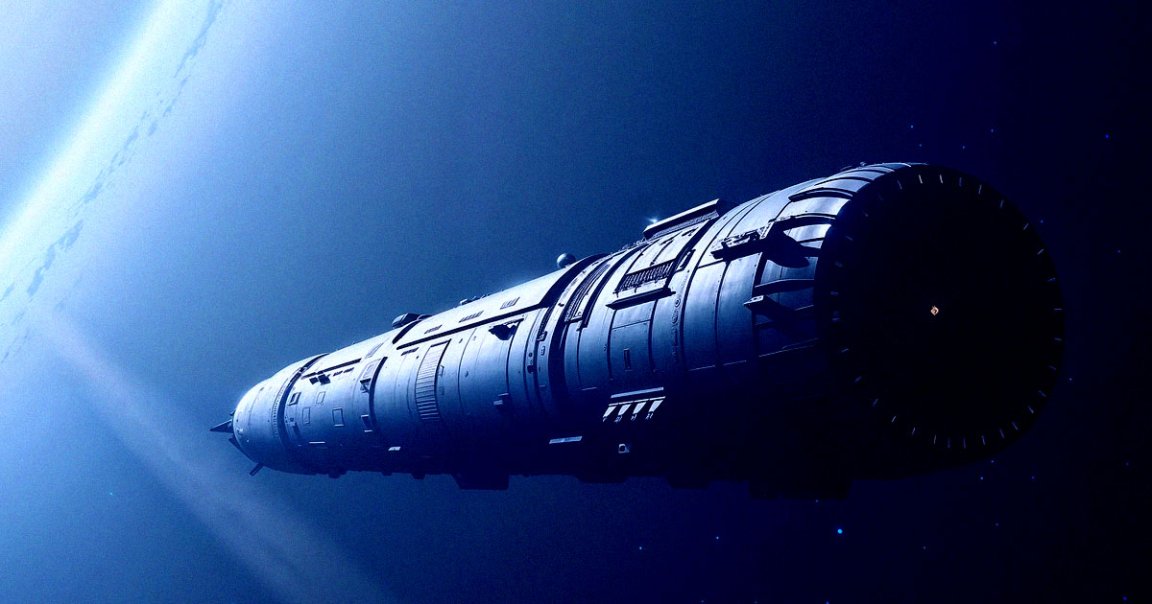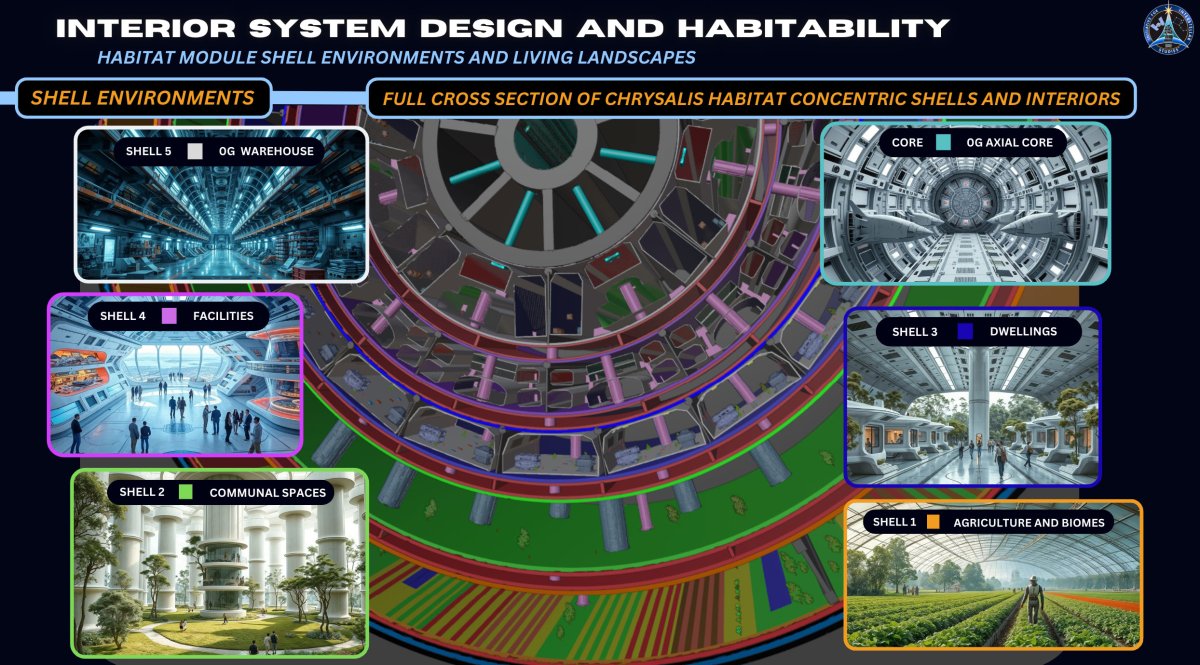
A team of engineers has come up with designs of a 36-mile spacecraft, dubbed Chrysalis, designed to carry up to 2,400 passengers to Alpha Centauri, the closest star system to our own.
As first spotted by Live Science, the ambitious vision recently won the team the top prize at the Project Hyperion Design Competition, which was launched last year by an international consortium of scientists, engineers, and urban planners.
Unsurprisingly, Chrysalis sounds like it was yanked straight out of a sci-fi novel. The hypothetical habitat generates Earth-like gravity by constantly rotating around its own axis, as laid out in a project brief. Several onion-like layers include dwellings and gardens for inhabitants, warehouses, food production and ecosystems, and communal spaces.
Each of these shells is powered by nuclear fusion reactors — which, it’s fair to point out, is tech that hasn’t been yet been made practical by anybody here on Earth.
Chrysalis is made up of several stages, each of which is a “fully autonomous and complete” habitat.

The layer closest to the core was designed to provide space for plants, microbes, livestock, and other mechanisms of food production. Various environments allow biodiversity to continue, including tropical and boreal forests.
The second layer houses communal spaces, and the third holds “3D-printed dwelling modules.” The outermost shell serves as a warehouse for machinery, equipment, and other types of resources.
A “Cosmos Dome,” 426 feet in height and 1,180 feet in diameter, provides a controlled, zero-gravity environment, as well as thermal insulation and shielding from deep space radiation.
It’s also the only place where inhabitants can gaze at the universe outside, while freely and safely floating around in weightlessness.
“Through the transparent panels of the dome, the inhabitants will be able to observe the universe to the rear of the spaceship,” the brief reads.
Since Chrysalis is a generational ship, the goal is to give both male and female inhabitants a three-year window between the ages of 28 and 31 to reproduce. There’s a two-child limit for each inhabitant, “not necessarily with the same partner,” according to the brief.
The goal is to maintain a “stable population” of roughly 1,500 individuals over three generations.
An artificial intelligence would allow for “resilience of the whole social system, better knowledge transfer between the different generations of inhabitants and a deeper vision of the overall dynamics of the Chrysalis spaceship complex,” the pitch reads.
While it’s a fascinating and detailed vision of an exciting, multi-generational journey to a different star system, Chrysalis is still firmly in the realm of science fiction.
Beyond the pesky issue of nuclear fusion not yet existing in a practical form, the manufacturing processes required to build a tens-of-miles structure in zero gravity far surpass anything humanity has accomplished yet. We haven’t even fully explored the concept of artificial gravity with the help of a centrifuge.
But that doesn’t mean we shouldn’t explore the concept — especially in the face of various potential disasters that could threaten humanity’s future on Earth.
More on generational ships: Researchers Plotting Giant Spaceship That Could Carry Generations of Humans